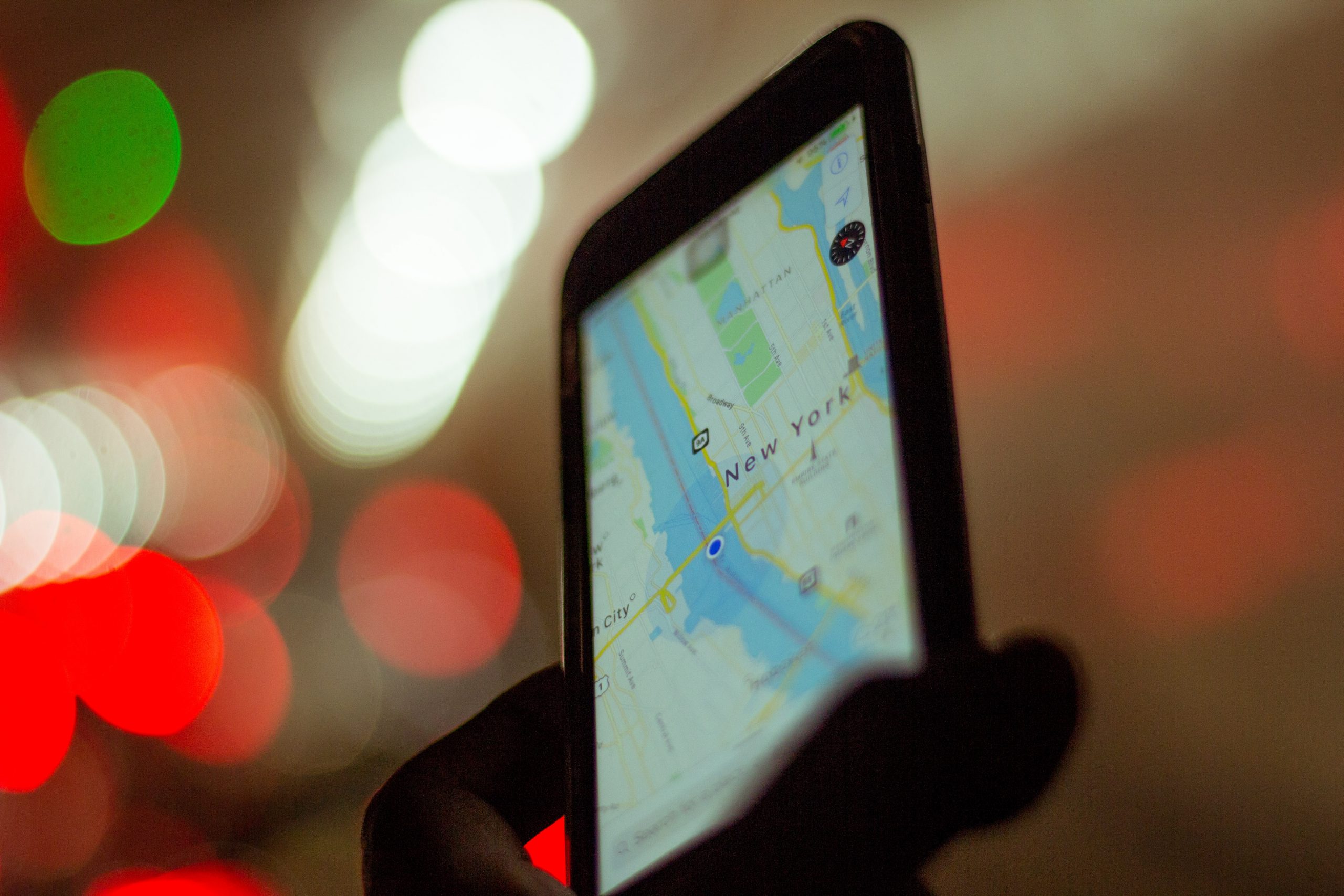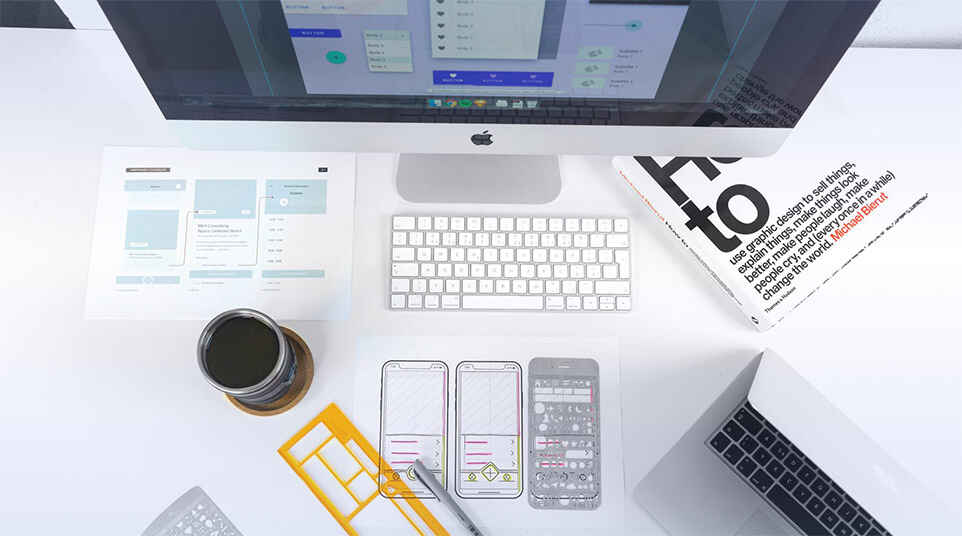In today’s digital era, mobile apps have become an integral part of our lives. Travel apps, in particular, have revolutionized the way we plan and experience our trips. Whether you’re a seasoned traveler or someone who simply wants to explore new destinations, having a travel app can enhance your overall experience. Are you intrigued about developing your own travel app? Look no further! In this step-by-step guide, we at WeSoftYou, a leading software development company with a proven track record, will walk you through the process of developing a mobile app for travel. So, let’s dive in and explore the exciting world of travel app development!
The Basics of Mobile App Development
Before embarking on the journey of developing a travel app, it is essential to understand the basics of mobile app development. From our experience, we have realized that market research plays a crucial role in the success of any app. Conducting market research helps you gain valuable insights into your target audience, understand the competitive landscape, and identify gaps in the market. Therefore, it is important to spend sufficient time on market research to ensure that your app caters to the needs and preferences of your target audience.
Market research serves as the foundation for developing a successful travel app. It allows you to identify trends, expectations, and pain points of your target audience. By understanding their needs, you can design an app that solves their problems and provides a seamless user experience. Additionally, market research helps you gain insights into your competitors and their strengths and weaknesses. This knowledge can help you position your app strategically and stand out in a crowded market.
After conducting thorough market research, it’s time to identify your target audience. Who are the main users of your app? Are they solo travelers, families, adventure enthusiasts, or business travelers? Understanding your target audience enables you to tailor your app to their specific needs and preferences. It also helps you define your app’s unique selling proposition and differentiate yourself from competitors.
When it comes to travel app development, choosing the right platform is crucial. Depending on your target audience and budget, you can opt for developing your app either for iOS, Android, or both. Each platform has its own advantages and challenges. iOS offers better security and a dedicated user base, while Android has a larger market share. Consider factors such as user preferences, market reach, and development cost before making a decision.
Once you have identified your target audience and chosen the right platform, it’s time to dive into the development process. This involves designing the user interface, developing the app’s features and functionalities, and testing for bugs and usability. It is important to follow best practices in mobile app development to ensure a smooth and efficient process.
During the development phase, it is crucial to prioritize user experience. Your app should be intuitive, easy to navigate, and visually appealing. Consider incorporating features such as personalized recommendations, real-time updates, and interactive maps to enhance the user experience. Additionally, make sure your app is optimized for different screen sizes and devices to cater to a wide range of users.
Once your app is developed, it’s time to launch it in the market. A successful app launch involves effective marketing strategies to create awareness and generate downloads. Utilize social media platforms, app store optimization techniques, and targeted advertising to reach your target audience. Collect user feedback and continuously update your app based on their needs and preferences to ensure its long-term success.
In conclusion, understanding the basics of mobile app development is crucial before embarking on the journey of developing a travel app. Market research, identifying your target audience, choosing the right platform, and prioritizing user experience are key factors that contribute to the success of your app. By following best practices and continuously updating your app based on user feedback, you can create a travel app that stands out in the competitive market and provides a seamless user experience.
Plan Your Travel App
Now that you have laid the groundwork for your travel app, it’s time to move on to the planning phase. Planning is a crucial step that sets the direction for the entire development process.
When it comes to planning your travel app, there are several important aspects to consider. From defining the purpose of your app to creating a list of essential features and designing the user interface, each step plays a vital role in ensuring the success of your app.
Define the Purpose of Your App
Before diving into the technicalities, it’s important to define the purpose of your travel app. Are you aiming to provide comprehensive travel information, help users find the best deals, or offer a platform for booking accommodations and transportation? Defining the purpose of your app helps you stay focused and ensures that your app provides value to users.
When defining the purpose of your app, it’s essential to consider the needs and preferences of your target audience. Are they frequent travelers looking for convenience and efficiency, or are they adventure seekers in search of unique experiences? Understanding your audience will help you tailor your app to their specific needs and desires.
Create a List of Essential Features
Based on market research and your app’s purpose, create a list of essential features that your travel app should include. These features could include search functionality, booking capabilities, travel itineraries, reviews and ratings, maps and navigation, and personalized recommendations. Prioritize the features based on their importance and feasibility within your time and budget constraints.
While it’s important to include essential features, it’s also crucial to strike a balance between functionality and simplicity. Overloading your app with too many features can overwhelm users and make the user experience confusing. Focus on providing the most valuable features that align with your app’s purpose and target audience.
Design the User Interface
Designing an intuitive and visually appealing user interface is key to engaging users and enhancing their experience with your travel app. Consider the user journey and ensure that the interface is easy to navigate. Pay attention to factors such as color schemes, typography, and iconography to create a visually cohesive and pleasing design. Conduct user testing and gather feedback to iterate and improve the user interface.
When designing the user interface, it’s important to keep in mind the different devices and screen sizes that users may be using. Your app should be responsive and adapt seamlessly to various devices, including smartphones, tablets, and desktop computers. This will ensure that users can access and enjoy your app regardless of the device they are using.
In addition to the visual aspects, consider incorporating interactive elements into your user interface. This could include features such as swipe gestures, animations, and interactive maps. These elements not only enhance the user experience but also make your app more engaging and memorable.
By carefully planning the purpose, features, and user interface of your travel app, you are setting the stage for a successful development process. Remember to continuously gather feedback and iterate on your app to ensure that it meets the evolving needs and expectations of your users.
Develop Your Travel App
Once you have planned the look and feel of your travel app, it’s time to start developing it. Selecting the right development tools and building a robust app architecture are crucial steps in this process.
Developing a travel app requires careful consideration and planning. It is essential to choose the right development tools that align with your app’s requirements, your team’s expertise, and your budget. With a plethora of options available in the market, it can be overwhelming to make a decision. However, popular development tools for travel app development include native development frameworks like Xcode for iOS and Android Studio for Android. These frameworks provide a solid foundation for building high-quality apps that deliver a seamless user experience. Additionally, cross-platform frameworks like React Native and Flutter offer the advantage of code reusability, allowing you to develop apps for multiple platforms simultaneously.
Select the Right Development Tools
There are a plethora of development tools available in the market. Choosing the right tools depends on factors such as your app’s requirements, your team’s expertise, and your budget. Popular development tools for travel app development include native development frameworks like Xcode for iOS and Android Studio for Android, as well as cross-platform frameworks like React Native and Flutter.
Building a travel app requires a solid app architecture that forms the backbone of your application. The app architecture determines how different components of your app interact with each other and how data flows within the app. It is crucial to choose an architecture that ensures scalability, maintainability, and performance.
Build the App Architecture
The app architecture forms the backbone of your travel app. It determines how different components of your app interact with each other and how data flows within the app. Choose an architecture that ensures scalability, maintainability, and performance. Popular app architectures include Model-View-Controller (MVC), Model-View-ViewModel (MVVM), and Clean Architecture. Consult with your development team to choose the architecture that best suits your app’s requirements.
Integrating essential features into your travel app is an exciting part of the development process. This involves writing code, implementing APIs, and connecting different modules to bring your app to life. It is crucial to thoroughly test each feature to ensure its functionality and usability. Additionally, consider integrating third-party APIs and services, such as payment gateways, mapping services, and social media sharing, to enhance the functionality of your app.
Integrate Essential Features

Now comes the exciting part – integrating the essential features into your travel app. This involves writing code, implementing APIs, and connecting different modules to bring your app to life. Make sure to thoroughly test each feature to ensure its functionality and usability. Additionally, consider integrating third-party APIs and services, such as payment gateways, mapping services, and social media sharing, to enhance the functionality of your app.
Developing a travel app is a complex process that requires careful planning, attention to detail, and a solid understanding of your target audience. By selecting the right development tools, building a robust app architecture, and integrating essential features, you can create a travel app that offers a seamless user experience and meets the needs of your users. Remember to continuously iterate and improve your app based on user feedback to ensure its success in the competitive travel app market.
Test Your Travel App
After months of hard work and development, it’s time to test your travel app. Testing is a critical phase that ensures your app works flawlessly across different devices and platforms.
During the testing phase, it’s important to thoroughly evaluate every aspect of your travel app to ensure it meets the highest standards. This includes checking for any bugs, performance issues, and compatibility problems that may arise on different devices and screen sizes.
One of the key components of testing is quality assurance. Quality assurance plays a vital role in delivering a bug-free and user-friendly app. It involves conducting rigorous testing to identify and fix any issues that may affect the app’s functionality or user experience.
Importance of Quality Assurance (QA)
Quality assurance ensures that your travel app meets the highest standards and provides a seamless user experience. By conducting thorough testing, you can identify any bugs or performance issues that may hinder the app’s functionality.
Imagine a user trying to book a flight through your travel app, only to encounter a bug that prevents them from completing the transaction. This could lead to frustration and a negative perception of your app. Quality assurance helps prevent such scenarios by identifying and fixing bugs before they reach the end-users.
Additionally, quality assurance helps in maintaining the reputation of your travel app. A well-tested and bug-free app creates a positive impression among users, leading to increased user satisfaction and loyalty.
Types of App Testing
There are various types of testing that your travel app should undergo to ensure its functionality and user experience are top-notch.
Functional testing is essential to check if all the features of your travel app work as intended. This includes testing the booking process, search functionality, payment gateway integration, and any other core features of your app.
Compatibility testing is also crucial to ensure your travel app runs smoothly on different devices and screen sizes. This involves testing your app on various smartphones, tablets, and operating systems to ensure it adapts well to different environments.
Usability testing is another important aspect of app testing. It helps gauge user satisfaction and ease of use. By observing how users interact with your app, you can identify any usability issues and make necessary improvements to enhance the user experience.
Performance testing is essential to evaluate your app’s speed and responsiveness. This involves testing your app under different scenarios, such as high network traffic or low battery conditions, to ensure it performs optimally in all situations.
Fixing Bugs and Improving User Experience
If any bugs or usability issues are identified during testing, it’s crucial to address them promptly. Fixing bugs and continuously improving the user experience demonstrates your commitment to providing a top-notch travel app.
One effective way to identify bugs and gather user feedback is by conducting beta testing. By releasing a beta version of your app to a select group of users, you can collect valuable insights and identify any issues that need to be addressed before the official launch.
Iterating on the app design and functionality based on user feedback is essential for providing a seamless and delightful experience to your users. By listening to their needs and preferences, you can make informed decisions on how to improve your app and make it more user-friendly.
Remember, testing is an ongoing process. Even after the initial launch, it’s important to continue monitoring and testing your app to ensure it remains bug-free and meets the evolving needs of your users.
Launch and Marketing Your Travel App
Finally, it’s time to take your travel app to the world and make it available to eager travelers. However, launching your app is just the beginning – effective marketing is the key to success.
When it comes to launching your travel app, there are several important steps to consider. One of the first things you need to do is prepare your app for submission to the app stores. This involves ensuring that your app meets all the guidelines and requirements of the respective platforms. Take the time to optimize your app’s listing by including compelling app screenshots, persuasive app descriptions, and captivating app icons. Remember to pay attention to keywords and use relevant ones to improve your app’s visibility in search results. The app store listing should clearly convey the value proposition of your travel app, enticing potential users to download and explore its features.
Creating a marketing strategy is another crucial aspect of launching your travel app. A robust marketing strategy is essential for promoting your app and attracting users. Utilize various digital marketing channels such as social media, content marketing, search engine optimization, and influencer collaborations to create a buzz around your app. Engage with your target audience through engaging and informative content, showcasing the unique features of your app, and incentivizing early adopters to spread the word. Implement tracking mechanisms to measure the success of your marketing efforts and make necessary adjustments to optimize your strategy.
Once your travel app is launched and gaining traction, it’s important to gather user feedback and make improvements. Launching your app is just the beginning of the journey. Continuously gather user feedback and analyze the app’s performance to identify areas for improvement. Engage with your user community through support channels and social media to address their concerns and make enhancements based on their feedback. This iterative approach allows you to enhance your app’s functionality and ensure it meets the evolving needs of your users, ultimately leading to higher user satisfaction and retention.
As you can see, developing a mobile app for travel requires careful planning, thorough execution, and continuous improvement. At WeSoftYou, we understand the intricacies involved in travel app development and have a wealth of experience in building successful mobile apps. Whether you need assistance with market research, app development, or launching and marketing your travel app, we have you covered. Contact us for a free consultation or project estimation and let us help you bring your travel app idea to life!
FAQ
The development timeline of a travel app varies depending on several factors, including the complexity of the app, the number of features, and the development team’s resources. On average, it can take anywhere from 3 to 9 months to develop a fully functional travel app.
Developing a travel app involves various stages, such as requirement gathering, design, development, testing, and deployment. During the requirement gathering phase, the development team works closely with the client to understand their specific needs and goals for the app. This helps in creating a comprehensive project plan and timeline.
Once the requirements are finalized, the design phase begins. This includes creating wireframes, user interface designs, and prototypes to visualize the app’s look and feel. The development team then starts coding the app, implementing the desired features and functionalities.
After the development is complete, rigorous testing is conducted to ensure that the app is free from bugs and performs seamlessly across different devices and platforms. Once the app passes all the tests, it is ready for deployment to the app stores.
The cost of developing a travel app depends on various factors, such as the complexity of the app, the number of features, the chosen platform, and the development team’s rates. It is best to discuss your specific requirements with a software development company like WeSoftYou to get an accurate cost estimate.
When estimating the cost of developing a travel app, it is important to consider the different components involved. These include the cost of design, development, testing, deployment, and ongoing maintenance. Additionally, factors like third-party integrations, database management, and server infrastructure can also impact the overall cost.
At WeSoftYou, we believe in providing transparent pricing to our clients. Our team of experts will work closely with you to understand your budget and requirements, and provide you with a detailed cost breakdown. We strive to deliver high-quality travel apps at competitive prices.
Yes, we offer ongoing support and maintenance services to ensure the smooth functioning of your travel app. We provide timely updates, bug fixes, performance optimization, and feature enhancements to keep your app up to date and meet the evolving needs of your users.
After the successful deployment of your travel app, our relationship doesn’t end there. We believe in establishing long-term partnerships with our clients and providing continuous support. Our dedicated support team is available to address any issues or concerns that may arise after the app is live.
Regular updates and bug fixes are essential to maintain the app’s performance and security. We also keep an eye on the latest industry trends and user feedback to identify opportunities for feature enhancements and improvements. By staying proactive, we ensure that your travel app remains competitive and delivers a seamless user experience.
Ready to embark on the journey of developing your own travel app? Contact us today for a free consultation or project estimation. We look forward to bringing your travel app idea to life!





















